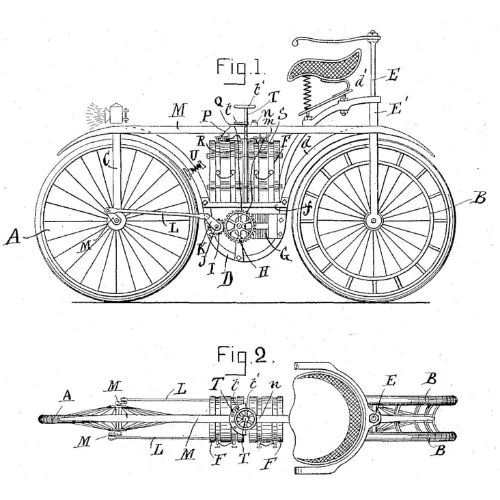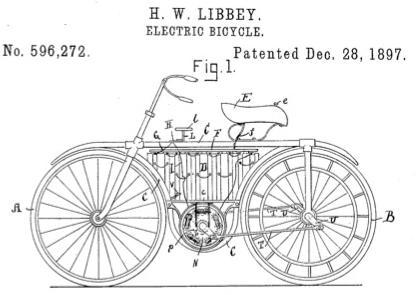HISTORY OF ELECTRIC BIKES
The ubiquitous electric bike, commonly known as the e-bike, has significantly transformed the landscape of personal mobility. The e-bike combines the core elements of traditional bicycle design with the compelling advancements of electric technology, providing a transportation solution that is not only eco-friendly but also extremely efficient.
Electric bikes serve many purposes in our modern world. They are used for recreation, personal transportation, and work. With over one billion bicycles in the world, 40 million of these are expected to be electric bikes by the year 2023.
But where did this remarkable mode of transportation originate? Who was the visionary that conceived the first e-bike? Let’s embark on a fascinating journey back in time to chronicle the evolution of the electric bike.
The Genesis of E-Bikes: A Look into the 19th Century
The inception of the electric bike dates back to the 19th century. In the United States, one of the first patents was awarded to Ogden Bolton Jr. in 1895 for a battery-powered bicycle that had its hub motor mounted inside the rear wheel and a battery sitting inside the main triangle of the frame. As time passed, more designs for ebikes entered the market, some of which represent the foundational ideas behind many of our present day e-machines. In 1897, Hosea W. Libbey of Boston invented an electric bicycle that was propelled by a double electric motor. The motor was designed within the hub of the crank set axle. This model follows similar principles of design and operation to present day mid-drive motors we see on some ebikes.
Early Development Phase: The Pioneer Era
Throughout the early 20th century, several inventors from across Europe and America followed in Bolton’s footsteps and engaged in the development of electric bikes. Designs varied significantly among these pioneers, ranging from the placement of motors and batteries to the mechanisms used for controlling speed.
One notable design from this period was patented by Hosea W. Libbey in 1897, who proposed a double electric motor system. However, the commercial viability of these inventions remained questionable, primarily due to the limitation posed by the available battery technology of that era.
The Advent of Technological Advancements: The Lithium-Ion Revolution
Fast forward to the mid-20th century, the emergence of lithium-ion batteries ushered a new era for electric bikes. These lightweight, rechargeable batteries substantially extended the range and improved the performance of e-bikes, making them a more practical option for everyday commuting.
Through the middle of the 20th century, electric bikes began to move into mass production. Europe was one of the first places to see early adoptions, with higher production levels and greater usage. One of the first was a collaboration between Philips and Simplex to create the 1932 Phillips Simplex Electric Bike.
Japan emerged as a frontrunner in this revolution, introducing the Panasonic C-1 in the 1970s. This e-bike model featured a highly efficient motor and a state-of-the-art removable battery system. The success of the Panasonic C-1 sparked a global interest in electric bike technology.

ebike
Global Proliferation of E-Bikes: The Late 20th Century
In 1989, one of the most important innovations was created in the form of the first ‘Pedelec’ or Pedal Electric Cycle (now known as pedal-assist) in which the motor power is triggered as assistance when any pedaling action is registered by the bike. Rather than using a throttle mechanism to control the motor, as all previous models had, this allowed riders to use an electric bike not so dissimilar to how one would ride a regular bike.
Michael Kutter developed these pedelec systems on a few of his own personal bikes, and then went on to assist the Velocity Company in creating the 1992 Dolphin Electric Bike for consumers to purchase. Following Kutter’s pedelec bicycles, pedal assist has become commonplace for modern electric bicycles.
Torque sensors and power controls were developed in the late 1990s. For example, Takada Yutky of Japan filed a patent in 1997 for such a device, and in 1992 Vector Services Limited offered and sold an e-bike dubbed Zike. The Zike bike included NiCd batteries that were built into a frame member and included an 850 g permanent-magnet motor. Despite the Zike, in 1992 hardly any commercial ebikes were available.
The e-bike had made its way to other parts of the world, including China and the Netherlands. These countries played a crucial role in the global popularization of e-bikes. In the late 90s, China, in particular, saw a significant growth in the use of e-bikes as a response to its burgeoning urban population and growing pollution concerns. In Europe, the Netherlands led the adoption of e-bikes, recognizing their potential for promoting sustainable and healthy living.
The Modern Electric Bike: A New Millennial Love
As the world stepped into the new millennium, the importance of sustainable transportation became increasingly evident. This shift in global mindset was favorable for the acceptance of e-bikes, propelling their popularity to new heights.
Today’s e-bikes are miles apart from the primitive designs of the late 19th century, equipped with several advanced features such as pedal-assist, high-powered batteries, and sophisticated digital displays. E-bikes have emerged as a preferred mode of transportation for numerous city dwellers, offering an ideal solution to the twin challenges of physical exertion and environmental sustainability.
Conclusion
Retracing the history of the electric bike serves as a testament to human creativity, ingenuity, and technological advancement. As we strive towards a more sustainable future, the significance of electric bikes in our lives will undoubtedly amplify. From Ogden Bolton Jr.’s rudimentary design to the sophisticated models we see today, e-bikes have not just evolved but have truly revolutionized the concept of personal transportation.
FAQ
Q1: Who invented the first electric bike?
The first known patent for an electric bike was filed by Ogden Bolton Jr., an American inventor, in 1895.
Q2: When did e-bikes become popular?
The popularity of e-bikes witnessed a significant surge in the new millennium, propelled by the growing global emphasis on eco-friendly and efficient modes of transportation.
Q3: What advancements have been made in e-bike technology?
Modern e-bikes come loaded with cutting-edge features such as pedal-assist, high-capacity rechargeable batteries, digital displays, and highly efficient motors. The introduction of lithium-ion batteries in the mid-20th century served as a crucial turning point in the evolution of the electric bike.
 Shuangye ebike
Shuangye ebike
